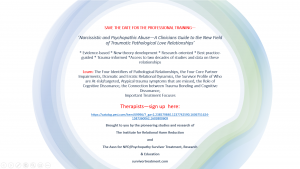Excerpt from a research paper written by Bessel A. van der Kolk, M.D.:
Research in laboratories devoted to elucidating human memory processes have consistently shown that memory is an active and constructive process: the mind constantly re-assembles old impressions and attaches them to new information. Memories, instead of precise recollections, are transformed into stories that we tell ourselves and others, in order to convey a coherent narrative of our experience of the world. Rarely do our minds generate precise images, smells, sensations, or muscular actions that accurately replicate earlier experiences.
However, learning from individuals who have been diagnosed with PTSD confronted us with the fact that, after having been traumatized, particular emotions, images, sensations, and muscular reactions related to the trauma may become deeply imprinted on people’s minds and that these traumatic imprints seem to be re-experienced without appreciable transformation, months, years or even decades after the actual event occurred (Janet, 1889, 1894; van der Kolk & van der Hart, 1991; van der Kolk & Fisler, 1995; van der Kolk, Osterman, & Hopper, 2000).






